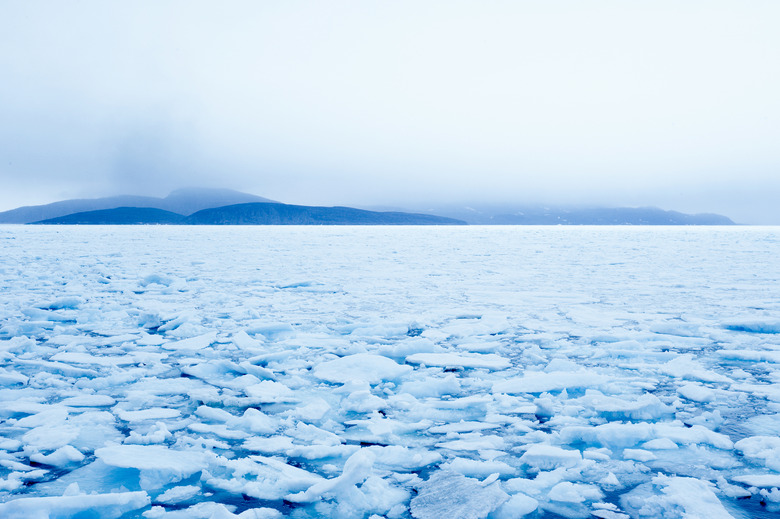List Of Countries In The Frigid Zone
The Earth traditionally falls, from pole to pole, into five climate zones, first classified as only three by Aristotle in ancient Greece. He gave the polar regions the names Arctic and Antarctic, noting that since the land to the extreme north "lay under the constellation of Arktos, the bear; so must the southern lands be under the opposite: Antarktikos." The regions carry the classification the North Frigid Zone and the South Frigid Zone, respectively. Eight modern nations have at least some territory within the North Frigid Zone, while only Antarctica — an unclaimed continent and thus not a nation — lies within the Southern Frigid Zone.
North America
North America
Three nations on the North American continent touch the North Frigid Zone. Canada's northernmost part of the Northwest Territories lies within this region located at 66 degrees, 33 minutes north of the Equator, including Victoria Island, Ellesmere, a large portion of Baffin Island and several other smaller islands. The United States' northernmost area of Alaska, including the Brooks Range of mountains, lies above the Arctic Circle. The coastal city of Barrow, located here, stand as the northernmost community in the United States. Most of Greenland, a territory of Denmark, lies above the Arctic Circle. An ice cap covers almost all of Greenland, except for the surrounding rocky coastline.
The Nordic Countries
The Nordic Countries
Four European nations that make up the Nordic nations span partly into the Frigid Zone. Norway's Svalbard Islands lie entirely within this region, as does the northernmost tip of its mainland. Sweden's northernmost region—part of Lapland, an area that includes northern Finland and part of Russia's Kola Peninsula of—also extends into the Arctic Circle. While Greenland technically lies in North America, Denmark handles much of its governance.
In this area above the Arctic Circle, the sun never sets on some summer nights and never rises on some winter days. The landscape of the Frigid Zone has a general covering of snow, ice and tundra (bare ground permanently frozen at least 10 inches to three feet down.) Trees cannot grow here. "Tundra" comes from the Finnish word "tunturia," meaning a barren land.
The island nation of Iceland in the North Atlantic Ocean has just a tip of its territory, Grimsey Island, situated 41 km north of the main island, touching the line of the Arctic Circle. A volcanic island, Iceland has a distinct geography. Strange rock formations, huge glaciers, and large amounts of geothermal energy lead some scientists to believe the country is microcosm of what the world was like in pre-history.
Russia and Siberia
Russia and Siberia
Russia, the largest nation on Earth, has a long top section within the Arctic Circle that extends from European Russia to Siberia — more Arctic territory than that of any of the other Frigid Zone nations. Much of Russia's land in the Arctic Circle lies uninhabited, though a few settlements exist. The country aggressively pushes its claim in the Arctic Circle, and regularly attempts to extend its influence over tracts of land in the region. During the Cold War, the United States often feared a Soviet Union attack would come from the frigid zone.
References
- Encyclopaedia Britannica: Antarctic Circle
- Encyclopaedia Britannica: Snow and Ice Climate
- Scandinavian Canadian Studies: Archaeology in Iceland: Recent Developments
- The National Post: Russia submits claim for 1.2-million square kilometres of the Arctic ...including the North Pole
- Ohio State University: Russia and The Race for The Arctic
Cite This Article
MLA
Lynch, Jacqueline. "List Of Countries In The Frigid Zone" sciencing.com, https://www.sciencing.com/list-countries-frigid-zone-5932217/. 10 May 2018.
APA
Lynch, Jacqueline. (2018, May 10). List Of Countries In The Frigid Zone. sciencing.com. Retrieved from https://www.sciencing.com/list-countries-frigid-zone-5932217/
Chicago
Lynch, Jacqueline. List Of Countries In The Frigid Zone last modified March 24, 2022. https://www.sciencing.com/list-countries-frigid-zone-5932217/
